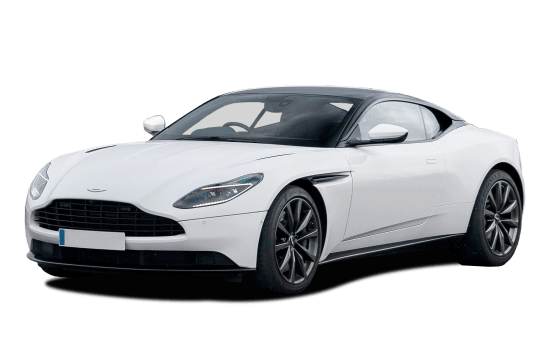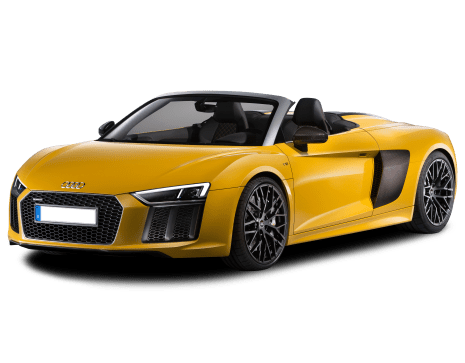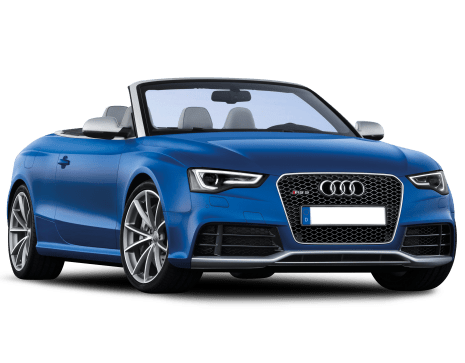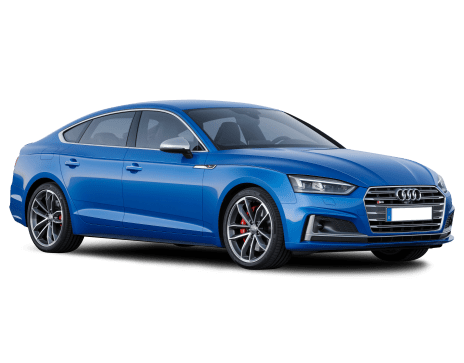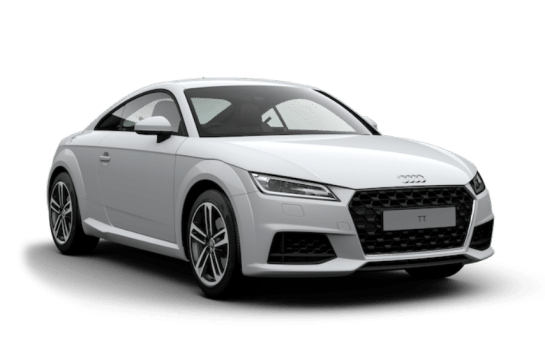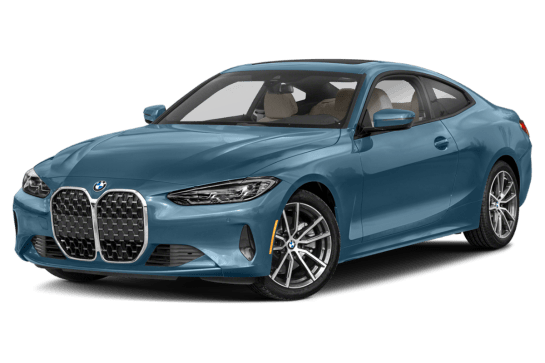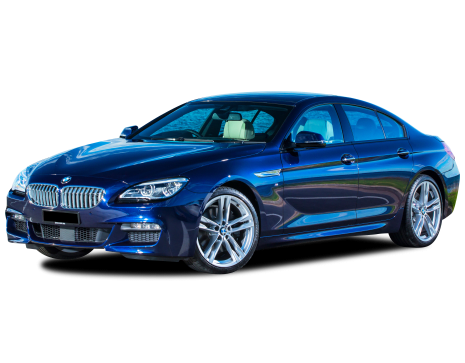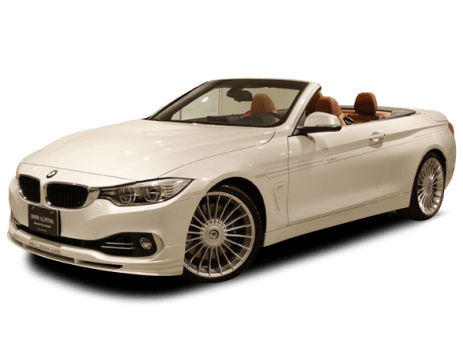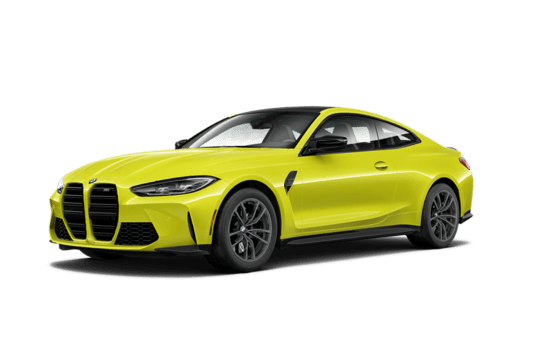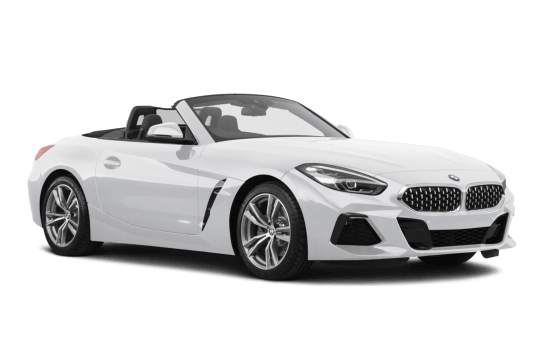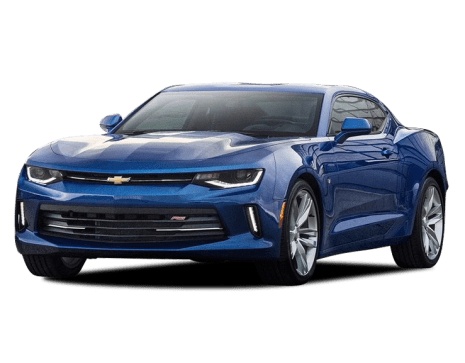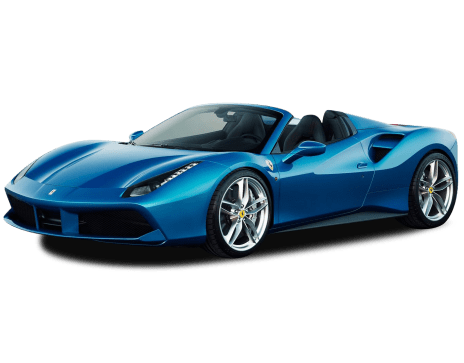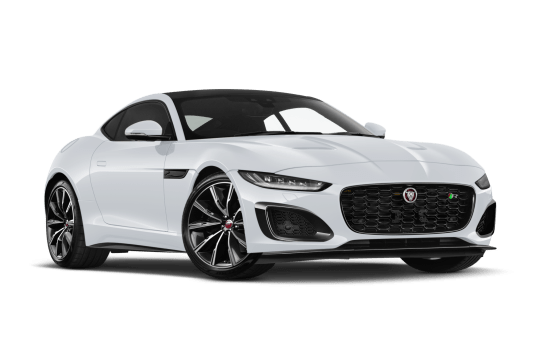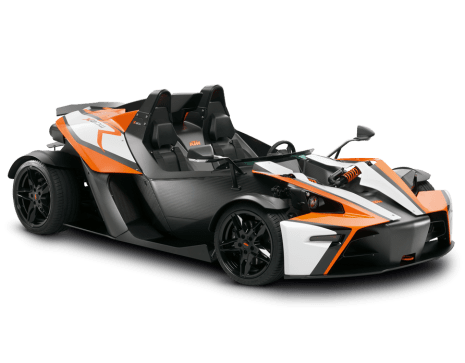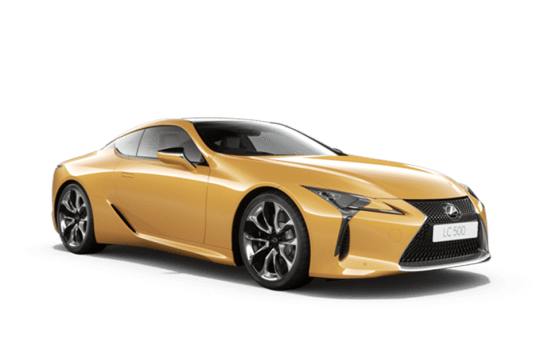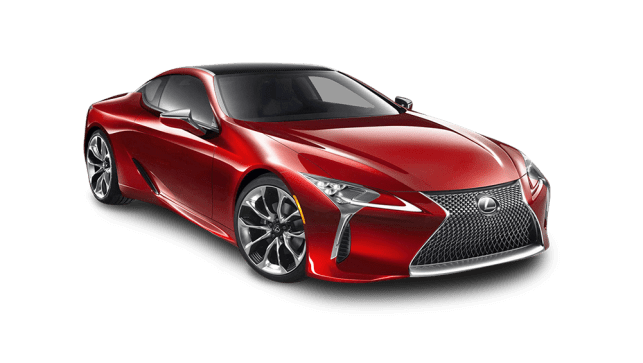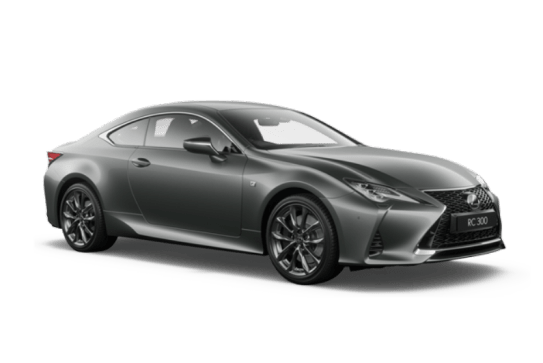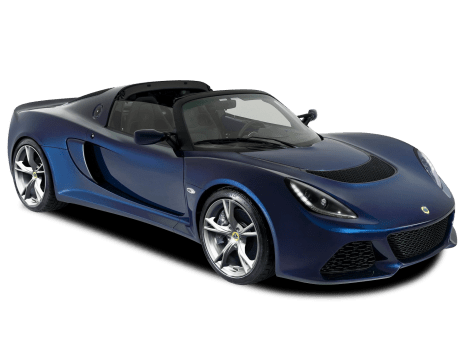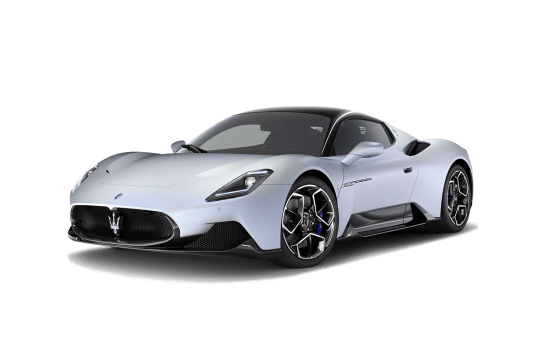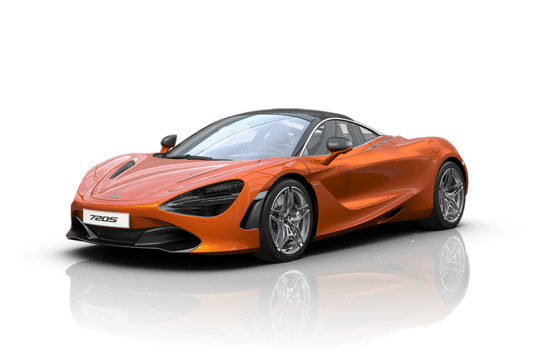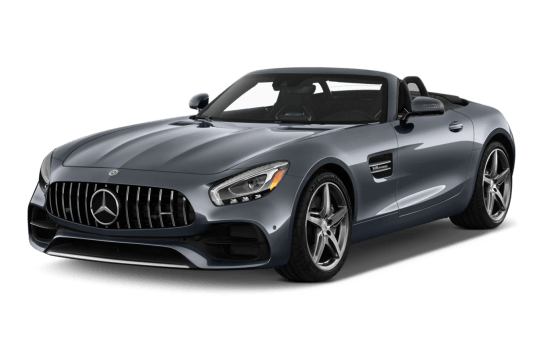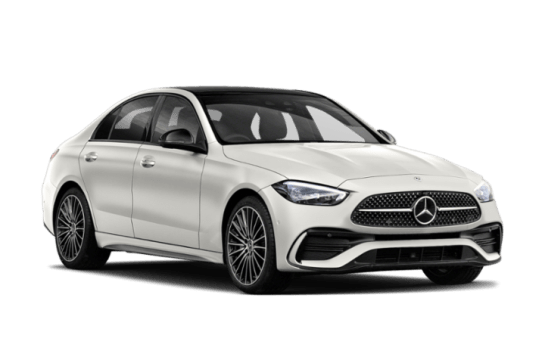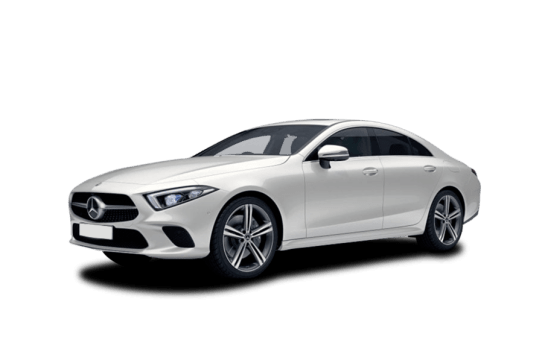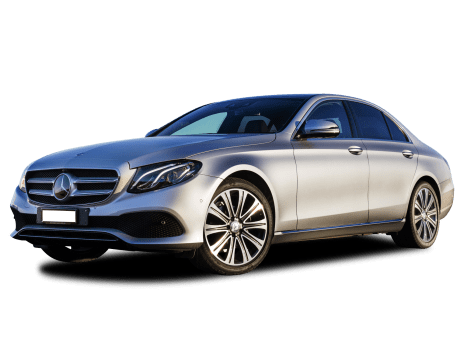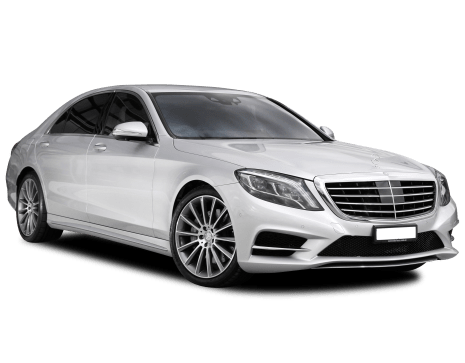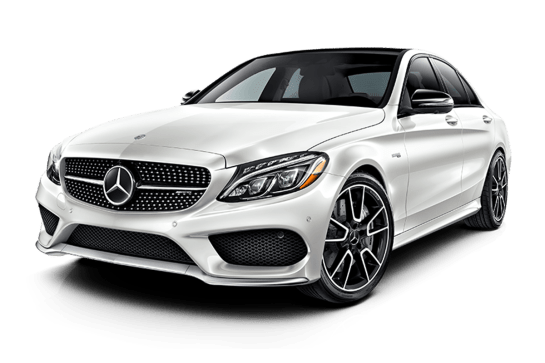
Mercedes-Benz C43 VS Audi R8
Mercedes-Benz C43
Likes
- Powerful engine despite small size
- Responsive handling
- Stylish and sporty interior
Dislikes
- Engine lacks drama expected from AMG
- Ride feels unresolved
- Big price jump over old model
Audi R8
Likes
- Superb dynamics
- Naturally aspirated V10
- Everyday usability
Dislikes
- Where's the advanced safety tech?
- No central media screen
- Not much in the way of cabin storage
Summary
Mercedes-Benz C43
Think of a Mercedes-AMG and the first words that spring to mind are probably not - understated, efficient and restrained. And yet those are probably the best words to describe the all-new C 43.
Of course, before we go any further it’s important to note that the C 43, even in its previous six-cylinder guise, was never meant to be as wild, raucous or powerful as the C63 flagship - that’s simply not its role in the AMG line-up.
But even so, this new model is a dive into fresh territory for the brand and puts a very different spin on the AMG sports sedan as we know it.
Read more about Mercedes-AMG
- Last of the traditional V8s! Mercedes-AMG farewells C63 S and E63 S with Final Editions
- F1-inspired limited-edition Mercedes-AMG C63 S confirmed for Australia
- The price is right! Aussies in line for Nurburgring record-breaking Mercedes-AMG One for eye-watering pricetag - and they won't be able to register them
This is a four-cylinder model, complete with a Formula One-derived electric turbocharger, so it lacks the sound and fury you expect from something carrying the ‘AMG’ badge - but that doesn’t mean it’s a bad car, as we’ll explain.
| Safety rating | — |
|---|---|
| Engine Type | — |
| Fuel Type | — |
| Fuel Efficiency | —L/100km |
| Seating | — |
Audi R8
Supercars can sometimes be seen as the divas of the auto world – delicate, over-the-top, not very good with reality. Well that may be the case for some supercars but not Audi's R8. It's affordable by supercar standards, easy to drive and still very, very fast.
Now the updated R8 has arrived, looking fiercer than ever, but remaining one of the smartest supercar buys on the market. But did you know there are two types of R8? Both have very distinct personalities and I lived with them for two days – in the reality of road works and also ideal country roads.
Here's everything you need to know...
| Safety rating | |
|---|---|
| Engine Type | 5.2L |
| Fuel Type | Premium Unleaded Petrol |
| Fuel Efficiency | 12L/100km |
| Seating | 2 seats |
Verdict
Mercedes-Benz C437.9/10
The new AMG C 43 may lack the drama and excitement we’ve come to expect from the German performance brand, but that doesn’t mean it’s a bad car. Yes, it could be more extroverted and the ride could be improved, but this is still a sharp-looking sports sedan with loads of punch.
This is a car that speaks to its times, with ever-stricter emissions regulations making it harder and harder for car companies to produce loud, wild and charismatic cars. So Mercedes-AMG has worked within those boundaries and come up with a car that retains at least some of those core elements that has made the brand so desirable over the years.
Note: CarsGuide attended this event as a guest of the manufacturer, with accommodation and meals provided.
Audi R87.8/10
The Audi R8 V10 RWD and V10 Performance Quattro have their own personalities. I'm a big fan of the lower-powered rear-wheel drive car, but the Performance is the ultimate here with better brakes and that 330km/h top speed. Either way the R8 is a true supercar, but one that doesn't have to be driven gingerly as though something may break off.
Design
Mercedes-Benz C437/10
Mercedes has created something of a problem for itself with its decision to introduce AMG styling packages for the majority of its range, including the C-Class.
It means the C 43 has to walk a fine line between looking like a unique AMG model, rather than just a C300 with a bodykit and not out-doing the C63.
To that end it has AMG’s now familiar grille with vertical bars, the unique and complex-looking 20-inch alloy rims and a small lip spoiler on the boot. But otherwise it is surprisingly understated for an AMG, lacking the more obvious and muscular stance of previous AMG offerings.
Inside, there’s a similar theme, with the typical Mercedes-Benz luxury appointments but with a sportier, AMG twist. The steering wheel is chunky and comes with AMG branding, metallic shift paddles and a pair of rotary dials/buttons that allow you to alter the various drive modes and settings.
The one on the right allows you to switch between the pre-set Comfort, Sport, Sport+ and Individual modes, while the one on the left can scroll between the various individual aspects to tailor the settings to the conditions.
In typical modern fashion the design is tech-laden, with a digital display for the instrument panel (that can be switched between various graphics) and a large, tablet-style central multimedia touchscreen that controls the majority of the car’s non-driving functions.
Audi R89/10
Lamborghini styling can look over the top, McLarens can sometimes appear delicate and fragile, and Ferraris seem to be everywhere, and even for me, begin to blend into one.
The R8, though, looks exactly how an Audi supercar should look – understated, tough and serious. Have you seen that Audi advert with the R8 on a dyno not wearing any pants? That sounds ridiculous but Google it because it sums up what the R8 is – a real car with a raw race car underneath, that's meant to be driven comfortably on the road and hard on a race track and the styling indicates that intent with little in the way of fanfare.
Well, there is that big window at the back which shows off the engine and the 'side blades' that surround the large vents carved into the side of the car to cool the engine.
The latest update has taken the design from the second-gen car which arrived in 2016 and added a new grille, front bumper, door sills and vents in the rear bumper. It's a more angular, sharper, and busier design with more vents and winglets than ever.
The R8 V10 RWD and R8 V10 Performance are close to identical in their styling. You can pick the Performance by its gloss carbon front spoiler, side sills, mirror caps and rear diffuser. The RWD has gloss black elements instead.
Which looks best: the Coupe or Spyder? That's a personal thing, but I reckon race cars need to have a hardtop roof, so it's the coupe for me, please.
Built using the 'Audi Space Frame' which weighs only 200kg, the R8 is 4426mm long and just 1240mm tall, but at 1940mm across it has a wide, planted stance.
Practicality
Mercedes-Benz C438/10
The new C-Class has grown slightly in size compared to the model it replaces, most notably with a 26mm increase in the wheelbase which you can feel in the cabin.
The front seat space is good, with excellent adjustability for the power-adjustable seats and steering column. I had no trouble finding my ideal seating position which makes for a more enjoyable and uncompromised driving experience.
Rear space is a bit tighter (which is typical for this segment/size of vehicle), but thankfully the standard seats do have very deep sculpting in the backs which allow for more knee space and foot room.
However, at approximately 180cm (six-foot), I wouldn’t like to sit behind my seating position for long periods as my knees were touching the seat back, and headroom is compromised with the panoramic glass roof.
In terms of small item storage there’s a lidded console box in between the front seats as well as a pair of cupholders and a small tray where you can place your mobile phone.
It’s worth noting, though, that early examples of the C 43 in Australia do not have a wireless smartphone charging pad, with that reportedly being introduced from February production.
While that’s good news, it’s not really competitive in this day and age to offer a car costing six-figures without such technology.
There’s also only a single USB-C power outlet in the front, which is another disappointment, but there is a pair in the back.
Mercedes does win some points back for a respectable 455-litre boot, which has a nice wide load opening that will make packing luggage easier.
Audi R87/10
The R8 is a two-seater supercar and practicality isn't high on its 'to do' list with limited cabin storage in the form door pockets almost as small as my jeans pockets, two cupholders hiding under a trapdoor in the centre armrest, a hidey hole in front of the shifter containing a wireless charger and two USB ports and the glove box.
As for the boot – there are two: one in the nose with a 112-litre cargo capacity and another behind the mid-mounted engine with 226 litres.
Room for people, well you and a friend, is excellent. I'm 191cm (6'3") tall with a 2.0m wingspan and found the footwell deep and spacious, while head and shoulder room is also good.
Price and features
Mercedes-Benz C438/10
We’ll get to the major change under the bonnet shortly, but another significant alteration for this latest C 43 is the price.
It now starts at $134,900 (plus on-road costs), which pushes it well above its market rivals, the BMW M340i xDrive and Audi S4, which start at $104,900 and $106,200, respectively.
However, Mercedes has added more technology under the bonnet and loaded the C 43 up with standard equipment, including its '4Matic' all-wheel drive system, adaptive damping, rear-wheel steering and 20-inch alloy wheels.
In terms of creature comforts, the C 43 is well-appointed, with leather upholstery, a head-up display, augmented reality navigation, a panoramic sliding sunroof, and a Burmester 3D surround sound system.
There are two option packages for the C 43. The 'Digital Light Package' costs $2400 and adds Multibeam LED headlights with 'Ultra Range' highbeam, 'Adaptive Highbeam Assist Plus' as well as active light function and cornering light function.
The 'Performance Ergonomics Package' includes AMG Performance front seats, an AMG Performance steering wheel in Nappa leather and microfibre and the 'AMG Track Pace' system for an additional $5200.
Audi R89/10
The entry level R8 RWD Coupe lists for $295,000, while the Spyder version is $316,500. The R8 V10 Performance Coupe is $395,000 and the Spyder is $416,500.
It's in my view the best value supercar on the market. The Lamborghini Huracán Evo shares the same 5.2-litre V10, the transmission and the chassis (like Audi it's part of the Volkswagen family) and starts at $460K.
A Ferrari 488 Pista is pushing $600K, but the McLaren 570S is closer in price at $395,000 – although I find the R8 much less stressful and completely different to drive – read about that below.
Let's talk features. Coming standard on the R8 RWD Coupe and Spyder are laser LED headlights (new to the R8 for this update), 20-inch cast aluminum wheels (also new), a full leather interior (new) with heated and power adjustable RS sports seats, 12.3-inch instrument cluster, Bang & Olufsen 13-speaker stereo (new, too), sat nav, digital radio, proximity key and wireless device charging (new).
The R8 V10 Performance Coupe gets all of the features above but swaps the wheels for lighter, milled alloy rims, ditches the steel brakes for ceramic (pricey to replace, though), and adds other mechanical extras over the entry car such as Audi's magnetic dampers, plus a carbon-fibre reinforced polymer front swaybar.
Explore the virtual Audi R8
What's missing? A central media screen would be good so your passenger can pick the music or follow the sat nav. Audi calls it a 'driver-focused cabin', but the Huracán has a media screen in the centre console.
I think there's a bit of advanced safety equipment missing, too – but that's in the section down further.
Under the bonnet
Mercedes-Benz C438/10
The biggest talking point about this new car is the engine, with AMG downsizing from the old C 43’s six-cylinder to a 2.0-litre four-cylinder turbocharged petrol engine.
But it’s not just any turbocharged four-pot, because it is fitted with technology that Mercedes claims has been inspired directly from its Formula One team.
While the F1 team engine facility is based in England, this engine was designed and developed by the Mercedes-AMG team at its Affalterbach headquarters, but the concept of the electric turbocharger reportedly comes from the engine that powered Lewis Hamilton to multiple world championships.
The electric exhaust gas turbocharger - to give it its official name - uses a small electric motor on the turbocharger shaft to spin up the blades without having to wait for any exhaust gases to pass through it first.
To power the electric turbo the C 43 is equipped with a mild-hybrid 48-volt electrical system.
Mercedes claims this means reduced lag and improved throttle response for a sportier driving experience.
It also helps make this small engine produce big amounts of performance, with AMG extracting 300kW of power and 500Nm of torque from this 2.0-litre, which is more power than the previous six-cylinder C 43 managed.
The engine is paired to a nine-speed multi-clutch transmission, which isn’t a dual-clutch with a pair of clutches operating on every second gear ratio, but instead uses a “wet start-off clutch” for better take-offs and smoother shifting on the move (at least in theory).
Power is sent to the road via all four wheels thanks to Mercedes’ 4Matic all-wheel drive system.
Audi R810/10
There are two grades in the Audi R8 range – the entry-point R8 V10 RWD which has rear-wheel drive (RWD), and the R8 V10 Performance Quattro which has all-wheel drive (AWD).
Both obviously have V10 engines, it's a naturally aspirated 5.2-litre petrol unit (so no turbos here), but the RWD makes less power and torque at 397kW and 540Nm, while the Performance produces 449kW and 560Nm.
The V10 is mounted behind the driver's seat but ahead of the rear axle making it mid-engined car. The engine even has its own window and you can see it in there with its face pressed up against the glass.
There are two body styles as well – the Coupe and Spyder (convertible, roadster, just another word for a retractable soft roof). We'll get to the prices in the next section, but let's talk about the more interesting numbers such as top speeds.
The V10 RWD in coupe form can reach 324km/h and the Spyder can hit 322km/h while the V10 Performance Coupe and Spyder are both a smidge quicker at 330km/h.
Those are all go-straight-to-jail speeds in Australia, so if you're tempted to fact check my numbers then do it on a racetrack. Audi holds excellent track days – I've done them and you'll not only get to drive the R8 as fast as you can, the instructors will help you improve your advanced driving skills, too. Do it, it could save your life.
Acceleration from 0-100km/h is rapid – 3.7 seconds and 3.8 seconds for the V10 RWD Coupe and Spyder respectively, while the V10 Performance Coupe and Spyder can nail it in 3.2 seconds and 3.3 seconds.
The V10 engine has a cylinder-on-demand feature which can shut down five of the cylinders while cruising on a motorway, say at 110km/h. It's a fuel-saving system, but keep in mind this V10 loves petrol and lots of it – I've hidden that all the way down the bottom of this review.
Shifting gears in all R8s is a seven-speed dual-clutch automatic transmission.
Efficiency
Mercedes-Benz C437/10
Despite the smaller engine you can hardly call the C 43 miserly, with a claimed combined urban/highway cycle rating of 9.1-litres per 100km. That’s only a 0.2L/100km improvement over the old six-cylinder.
On test, which included a return trip from Sydney to Bathurst via motorways and some dynamic back road driving, we saw a return of 11.8L/100km on the car's onboard computer.
While hardly hybrid-worrying, it’s impressive to think that driven modestly, such a potent engine can return a single-digit fuel figure.
Audi R87/10
That's like asking how many calories are in this pavlova that I'm about to push into my mouth? Seriously if you're asking then you shouldn't be eating it – or driving the R8.
But just for the record, according to Audi the RWD R8 uses 12.0L/100km in Coupe form and 12.2L/100km in Spyder guise after a combination of urban and open roads, while the AWD R8 of course will use more at 13.4L/100km for both Coupe and Spyder.
Driving
Mercedes-Benz C438/10
Let’s start with the good news. The new Mercedes-AMG C 43 is a quick car. The engine may be small in size but the electric turbocharger does its thing and provides plenty of punch.
You can get a performance boost, too, thanks to the belt-driven starter generator, which acts as a mild hybrid and gives you a surge of 10kW for a brief period if you need a sudden burst of extra speed.
The chassis is well-sorted, too, at least from a dynamic point-of-view. The rear-wheel steering can provide up to 2.5 degrees of turning, which improves handling at speed and manoeuvrability when parking.
However, there are some less-impressive elements to the C 43, too. The obvious one is the drama, or rather the lack thereof.
As I said at the beginning, the C 43 has never been as wild or raucous as the V8-powered C 63, but when you buy an AMG there’s a rightful expectation that it will provide some thrills.
The C 43 simply doesn’t have that character about it. Yes, it’s fast, but it produces that speed with efficiency rather than excitement.
And it’s not an engine size problem, because even the 2.0-litre four-cylinder A 35 and CLA 35 offer more ‘wow factor’ than the C 43.
Yes, the engine makes noise under acceleration (and it can be altered between discreet and sporty) but even at its best it sounds muted and lacks the evocative tone of a V8 or six-cylinder engine.
Another disappointment is the transmission calibration, with the gearbox awkwardly shifting out of first gear on multiple occasions during our test drive.
In the taller gears it felt smooth enough cruising along, but given its low speed shifts we’d like to spend more time in the urban environment before passing final judgement.
The other notable element of the driving experience we struggled with was the ride quality. While fine on the smoother motorways, our test drive included time on some patchy country back roads and the C 43, even in the ‘Comfort’ suspension setting, was simply too firm.
Riding on low profile tyres, the adaptive dampers struggled to isolate the cabin from the imperfections in the road, leading to a fussy ride at times.
Overall the C 43 is a good car, but it feels like there are still some areas where Mercedes could improve it to make it really live up to the AMG badge.
Audi R89/10
A race circuit is the best place to test the performance of an Audi R8. I've been lucky enough to have done this in the past, but for this update of the R8 the Australian launch was held on public roads and included a convoy of RS models such as the RS 6 Avant, RS 7, RS Q3 and TT RS.
Even then I think I was 'stitched up' because I began the day in the R8 V10 Performance Coupe but spent almost the entirety of my allocated time in roadworks at 40km/h before swapping to an RS Q3.
So, while I can't honesty comment about the dynamics on this updated R8 V10 Performance Coupe I can tell you that having driven every iteration of the R8 since 2012 that it's a weapon, with helicopter-like visibility out of that large front window.
If, like me, you think turbos are 'cheating' (superchargers are fine), then you'll love the linear power delivery of the R8's naturally aspirated V10, and while I love front-engined sportscars, nothing beats a mid-engined car for the feeling of balance and lightness in the nose while having the sound of thousands of explosions going off just behind your back.
Having AWD is not just great for acceleration and perfect traction from Audi's quattro system, I think it's a good safety feature in a supercar, and while only your judgements can stop things going pear shaped, the system will be there to help on slippery roads.
The following day was different. I was in the R8 V10 RWD, the country roads were superb and while it wasn't a racetrack it was enough to get a hint of the capabilities of the RWD R8.
While the R8 V10 RWD feels the same to sit in with the same great view, it feels different to drive than its faster sibling, in a good way. First there's the noticeable power difference – more than 50kW and 20Nm less – but also the lack of AWD makes the front end feel more pointable, and the car feel more like a traditional sportscar that pushes from behind rather than pulling from the front. Less power, but more fun.
The RS cars in our test convoy were all awesome machines, but stepping out of even the RS6 Avant and slipping down into the R8 cockpit was like getting into a UFO – it's so far ahead dynamically of any other Audi that all I could do was laugh like an idiot. Corners which were making an RS 7 really struggle, were handled effortlessly by the R8. And in a straight line it's a bullet in a barrel.
The Performance has the better brakes: 380mm ceramic discs with six piston calipers up front and 356mm discs with four piston calipers at the rear. The RWD has steel discs – 365mm with eight piston calipers up front and 356mm discs with four piston calipers in the rear.
Keep in mind if you are planning on track days, you'll find the ceramic discs costly to replace, and beside the stopping power of the steel ones is excellent.
And yet, on pot holed course bitumen the ride is a lot more comfortable than you might think and having driven the Performance in traffic it's a much nicer place to sit than the claustrophobic cabin of a McLaren 570S. You could honestly use the R8 daily.
Safety
Mercedes-Benz C439/10
The C43 gets a comprehensive list of safety equipment that leaves little out. Obviously there are the usual passive safety items, like 10 airbags, including dual-front combined pelvic/thorax airbags and a front centre bag that drops between the front seat passengers to minimise the chances of a head clash.
Also included as standard is autonomous emergency braking front and rear (covering speeds between 7.0-200km/h), adaptive cruise control with active stop/go, a 360-degree parking camera, 'Active Parking Assist', 'Active Lane Keeping Assist', 'Blind Spot Assist' and, of course, anti-lock brakes with 'Brake Assist' and 'Adaptive Brakes' with Hold function and electronic stability control.
Also included are dusk-sensing LED lights, rain-sensing wipers and run-flat tyres with tyre pressure warning.
The C43 also comes equipped with Mercedes’ 'Driving Assistance Package Plus', which adds even more safety gear. This includes 'Active Blind Spot Assist', 'Active Brake Assist with Cross-Traffic Function', 'Active Emergency Stop Assist', 'Active Lane Change Assist', 'Active Lane Keeping Assist', 'Active Steering Assist', and 'Active Stop-and-Go Assist'.
While the C43 hasn’t been specifically crash-tested, the latest C-Class was rated by ANCAP with a five-star score for all models except the upcoming C 63 S E Performance.
Audi R85/10
ANCAP has not tested the Audi R8 so there's no star rating available. What we can tell you is that the R8 has a low level of advanced safety technology – there's no AEB, no adaptive cruise control, no rear cross traffic alert, nor blind spot warning, nor lane keeping assistance. That's the reason why the score is so low here.
The R8 does have electronic stability control and ABS, and active roll over protection, plus six airbags, although the Spyder doesn't have curtain airbags.
Ownership
Mercedes-Benz C438/10
The C 43 is covered by Mercedes’ five-year, unlimited kilometre warranty, which has become the new standard for the luxury car market.
Service intervals for the car are at 12 months/25,000km, which is on par with industry standard.
Mercedes-Benz Australia will offer a service plan for the C 43, prices were yet to be confirmed at the time of publication but the company has indicated it will be similar to the C300.
That means $550 for year one, $900 for year two, the third service costs $1000 and the fourth year service costs $2450 - for a total of $4900 for the first four years of ownership.
Audi R86/10
The R8 is covered by Audi's three-year, unlimited kilometre warranty which not only falls behind in duration compared to mainstream brands but also its direct rival Mercedes-Benz which now has five-year, unlimited kilometre coverage.
Service intervals are every 12 months or 15,000km but unlike other Audi models there isn't a three-year or five-year plan available.


